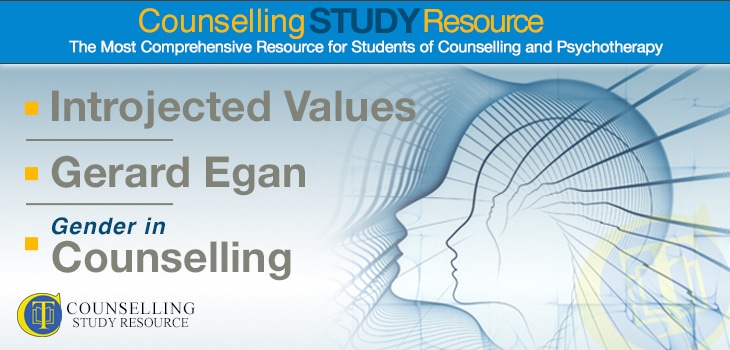Introjected Values
Ken and Rory discuss the difference between introjected values and conditions of worth, illustrating each with real-life examples. The concept of introjects comes from Carl Rogers‘ person-centred theory; Rogers believed that introjects get in the way of people being their true (organismic) selves, causing them to adopt others’ values as their own truths. Challenging the introject of how women ‘should’ look (as implied by, say, magazine covers), Rory recommends The Beauty Myth by Naomi Wolf. A common condition of worth, meanwhile, is: ‘Big boys don’t cry.’
Counselling Student Library
On-demand access to a rich lecture library covering theory, skills, and professional development for counselling students—Mapped to the UK awarding body criteria
“The Student Library has been BRILLIANT, I can’t recommend it enough!
It has been a lifeline in helping me prepare for practice and my first clients. If you’re considering it, go-for-it, it’s absolutely worth it!”
Kelly – Graduated and now in practice.
Gerard Egan
Currently Professor Emeritus of Psychology and Organisation Development at the Loyola University of Chicago, Gerard Egan wrote The Skilled Helper – one of the most widely read books on counselling and communication skills – in 1975.
Egan’s integrative model draws from the work of Carl Rogers and Robert Carkhuff (co-creator with Charles Truax of the Empathy Scale, available as a free download in Counselling Tutor Podcast episode 8). Egan developed a non-coercive way of helping people reach their own goals, based on three questions/stages:
- What is going on (i.e. the current scenario)? This stage subdivides into the story, blind spots and leverage.
- What do I want instead (i.e. the preferred scenario)? Here, the helper and client look at possibilities, the change agenda and commitment.
- How might I get to what I want (i.e. action strategies)? The process concludes by examining possible strategies, identifying the best fit and making a plan.
Rory identifies the counselling skills that are needed at each stage. For example, in stage 1, the counsellor needs to use silence to listen to the story; reflection and paraphrasing to identify blind spots; and focusing to create leverage. Questioning is important at stage 2, which includes supporting clients to create objectives that are SMART: specific, measurable, achievable, realistic and time-bound.
Egan believed strongly that first impressions are lasting impressions, and so that establishing a sound therapeutic relationship from the start was vital to success. Key to ensuring that the client developed this trust in the counsellor was the concept of SOLER: sitting squarely, open posture, leaning forward and looking interested, eye contact, and relaxing.
Egan’s model is quite directive, and so in some ways fits better with cognitive behavioural therapy, transactional analysis and motivational interviewing (a technique used by health professionals) than with the person-centred approach. Nonetheless, there are many connections and common features with Rogers’ work.
Rory asserts that much person-centred counselling training these days has integrative elements. Indeed, Egan’s model – though not as widely recognized as some other psychologists’ work – could be said to form the basis of much modern counselling.


